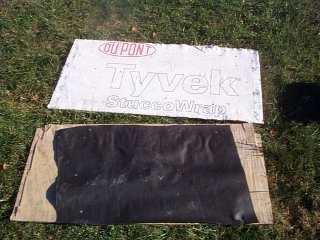 |
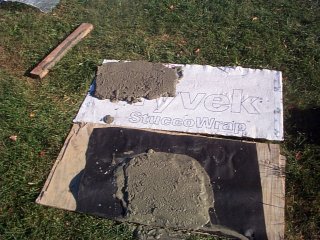 |
| Stucco wrap sure has some impressive data. Click here to visit their web site. Claiming 30% more flexural strength in stucco, and on and on, it seems that this is greatest thing to happen to stucco since portland cement. |
My two test samples, tarpaper and Stucco wrap are put on plywood. Then, portland cement mortar is spread on to a thickness of 3/4", the standard thickness of a stucco basecoat. |
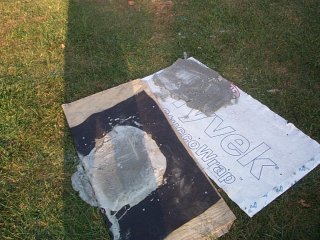 |
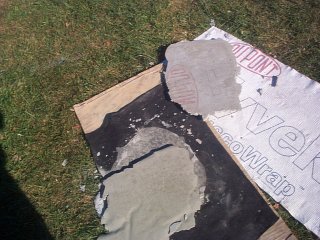 |
| After 3 days, the tarpaper shows quicker
drying than the StuccoWrap. If mortar dries out before it sets, this could weaken the mortar. Conventional tyvek traps water against the back side of the mortar, and never sets all the way, weakening the stucco as well. "Tyvek� StuccoWrap� is better than Grade D paper at managing hydration and remaining stable during curing. These two features result in a dramatic reduction of cracking in the scratch coat" There were no shrinkage cracks in either sample.
|
After 5 days, the blobs
of mortar were peeled away for further testing. The mortar popped right off the StuccoWrap but had to be peeled off the tarpaper, indicating the tarpaper is porous allowing mortar to bond as well as breath on the backside for curing. |
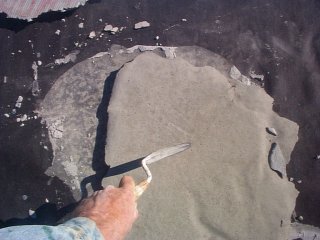 |
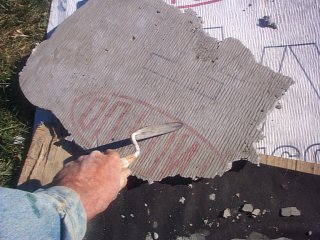 |
| Tarpaper sample is scratched with a margin trowel to test for strength on the back side. | It took the same amount of pressure to
scratch the StuccoWrap sample. A tie race so far. |
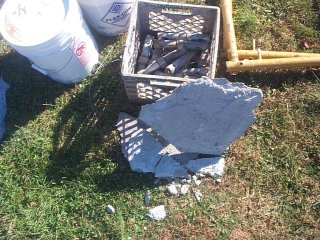 |
Tarpaper
wins
! I stood up the samples and kicked |